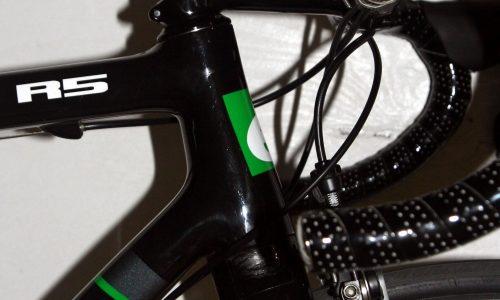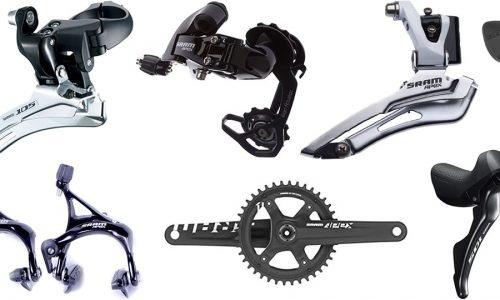Riding bikes is a huge amount of fun, and once you get the cycling bug, it’s tough to get rid of. There’s very little that beats a long day out on the bike with loved ones challenging yourself and others.
At Bike Test Reviews, we get asked many questions about cycling and love answering them for our readers. One question that has come up multiple times is, “Is it safe to ride on a wet pavement?”
In this article, we’re going to be answering that question alongside giving you some tips and tricks around riding in poor conditions on pavements. Here’s what we are going to be discussing:
- Can You Ride On A Wet Pavement?
- Understanding The Risks Of Riding On A Wet Pavement
- How To Stop Yourself From Having An Accident On Wet Pavements

Can You Ride On A Wet Pavement?
When it comes to cycling on the pavement, it’s not something that experts advise, and generally, many countries don’t allow cyclists to use the pavement but tell them to go on to a cycle path or road.
Though, in theory, there’s no reason why you can’t cycle on the pavement while on a bike if it’s empty and nobody else is using it. It’s probably safer than a busy road that could be next to it.
Generally, pavements are a fairly smooth surface, and you take the risk of actually falling off as bike tires are generally not designed for them. Add an element of water into them, and they can get very sketchy.
So yes, you can ride on the pavement, but it does come with its risks, especially if it’s soaking wet. It’s a place where you might see many cyclists lose their bikes to gravity.

Understanding The Risks Of Riding On A Wet Pavement
Many risks come with riding on wet pavement, and there’s a reason why a lot of people don’t. Here’s what you need to know:
It’s Slippery When Dry
Pavements, even when dry, are not the grippiest of surfaces. When wet, they are even worse. We don’t recommend riding on pavements because there’s a strong possibility that you will fall off.
They Are Even More Slippery When Wet
The way pavements are designed is not for grip when wet, and because of this makes them incredibly slippery when they get rain on them. Trying to control a bike on wet pavement is very challenging.
They Don’t Soak Water In Easily
The next thing to mention is unlike tarmac, water doesn’t soak in very well. Instead, the water sits on the top, which doesn’t make it great for riding on. Wet pavements with water on top are a huge risk and cause aquaplaning.
Pavement Provides Little Traction
Unlike tarmac, pavement provides very little traction for the cyclist, and instead of offering a grippy surface for the tires, it offers a loose surface in which, as soon as you lose the traction, the tires just slip out.
They generally have People On
Pavements are not really designed for cycling and are more focused on people who are walking, so you can expect to see a lot of people on them who might not want to share the space with bikes.

How To Stop Yourself From Having An Accident On Wet Pavements
If you have to ride on the pavement, there are many ways you can make it much safer for yourself by doing so. Here are our top tips:
Tires To Suit
The optimal tires for pavement cycling are those featuring grooves, which offer superior performance, particularly in wet weather conditions. These will be clearly visible by looking for channels on the tires that the water can run through.
You can also benefit from using a smaller or a larger tire while spending on the pavement. Larger if you are on a generally wet surface and smaller if you have a lot of puddles to go through. We recommend mid-sized for a mix of both, but larger is probably better overall.
Avoid Puddles
Puddles are the cause of so many accidents when it comes to riding on wet pavements. They cause the wheels to aquaplane, and you never know if there’s a pothole under them waiting to take you out.
When riding, do your best to avoid the puddles and only go through them if you have to. Try to stop pedaling as you go through so you can focus on balance instead.
Slower And Steady
Finally, our last tip is to keep it slow and steady. Avoid going too fast, as that is what is going to cause you to slip, and also, you’re going to hit the deck much faster when you do, causing yourself a possible injury.
You will also want to avoid sudden turns and leaning too much from side to side. This is going to give you a greater chance of not slipping outwards.

A Final Note
When it comes to cycling, wet pavement is not an ideal place to be. You are much better off being on tarmac or a proper cycle path.
We appreciate it if you live in a city sometimes you don’t have much choice. Thanks for reading our article and make sure to ride safely.

Robbie Ferri has spent years working in a bike shop, has worked with industry leading brands on product creation, has been a semi pro athlete, and is a fully qualified strength and conditioning coach. He has broken World Records, bikepacked all over the World and raced ultra distance at a top-level.


